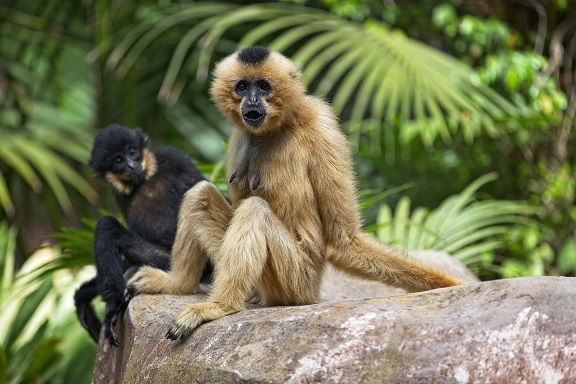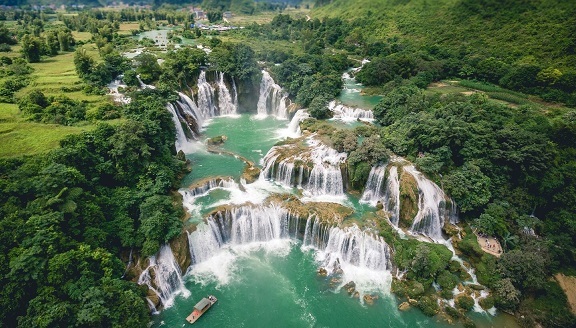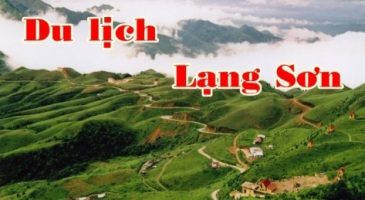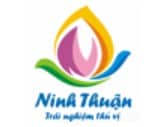 |
Pho (noodle) is a traditional dish that is considered typical Vietnamese cuisine. From north to south, Pho is preferred by local people and foreign tourists. However, to taste and feel the original flavor of Pho, all will lead to Hanoi pho, the noticeable feature of Hanoi cuisine culture and the pride of Hanoians.
Each pho restaurant in the capital city has its own esoteric recipes. And the hunt for good pho restaurants in Hanoi is also an interesting experience for all visitors.
Nestled among French-style buildings in the Old Quarter, the best pho restaurants often have simple looks, simple tables and chairs, and luscious pots of broth. The address definitely not to be missed on this list is Pho Thin Lo Duc restaurant with a very special ‘smoky’ taste of stir-fried beef noodle.
Exploring the world’s largest cave
 |
Son Doong Cave is the world’s largest natural cave, housing many limestone grottoes, stalactites and stalagmites. Set within Phong Nha-Ke Bang National Park in the central province of Quang Binh, the cave is a must visit for adventurous travellers.
Son Doong cave was first discovered in 1991 by a local named Ho Khanh, followed by a team of British cavers lead by Howard Limbert in 2009. With sections reaching up to 200 metres high, Son Doong Cave also spans 9 km in length, making it the largest natural cave in the world.
Releasing lanterns in Hoi An ancient town
 |
Lying on the banks of the Thu Bon River, the central province of Quang Nam, Hoi An Ancient Town is an exceptionally well-preserved example of a South-East Asian trading port dating from the 15th to the 19th century.
Hoi An has become a very popular tourist destination in Vietnam. Its buildings and its street plan reflect the influences, both indigenous and foreign, that have combined to produce this unique heritage site. In 1999, the old town was declared a World Heritage site by the UNESCO.
Every Tet (Lunar New Year) holiday, this beautiful old town turns into a colorful fairy-tale space with thousands of shimmering lanterns released on the Hoai River.
Visiting Ha Long Bay and surrounding magnificent landscapes
 |
Ha Long Bay is a beautiful natural wonder in the northern province of Quang Ninh. The bay is dotted with 1,600 limestone islands and islets and covers an area of over 1,500 sq.km. This extraordinary area was declared a UNESCO World Heritage Site in 1994. Ha Long Bay features a wide range of biodiversity, while the surrealistic scenery has indeed featured in endless movies.
Not far away, Bai Tu Long Bay with pristine caves and small beaches is another suggestion for those looking for a destination that is not crowded. Most visitors can choose to take a cruise tour, which combines a panoramic view of the bay by seaplane in a 40-minute trip.
Wandering in Cat Ba Island
 |
Cat Ba National Park was established in 1986. It covers 17,362.96 hectares, of which 10,912.51 hectares are terrestrial ecosystems (islands) and 6,450.45 hectares are marine ecosystems. The Park is situated in the Cat Ba Archipelago which consists of 366 islands.
Cat Ba National Park is at the heart of the UNESCO Cat Ba Archipelago Biosphere Reserve and it shares the distinctive scenic beauty of the Ha Long Bay Area, a UNESCO World Heritage Site. The Park is also home to diverse range of terrestrial and marine life.
Coming to the Park, travelers can enjoy the beauty of the vast landscapes and seascapes. Visitors can choose to relax on isolated beaches in Lan Ha Bay, trek through primeval tropical rain forest or mangrove forest, discover many unique animal and plant species, and immerse themselves in the local culture.
A tour to the Mekong Delta
 |
The Mekong Delta is a network of tributaries in southwest Vietnam. More than half of Vietnam’s rice and fish comes from the delta region, so you can see how vital it is to the Vietnamese economy and diet.
Life in the area revolves around water, from the famous floating markets to the vast agricultural industries; a variety of fruits, flowers and livestock grow in the region.
A visit to Buon Ma Thuot Coffee Museum
 |
Buon Ma Thuot Coffee Museum is located on Nguyen Dinh Chieu street, Tan Loi ward, Buon Ma Thuot city. Designed with the typical architecture of “Nha Dai” (a long house on stilts) of the ethnic minority people in the central highlands, the museum also helps visitors learn about the rich local culture.
Objects exhibited have been collected from all around the world, with over 10,000 relating to coffee from a number of coffee cultures around the world through various periods that belong to the Jens Burg Coffee Museum, a popular tourist attraction in Hamburg, Germany.
There are also objects showing coffee production in Vietnam from the early days until now. The World Coffee Museum is regarded as the world’s most diverse collection of coffee history and coffee production tools.
In addition to the display area, the museum also features an exhibition space, a library, a conference area, and a coffee corner. It also provides a virtual tour, with a 360-degree panorama and objects with detailed information.
Learning about Saigon
 |
Vibrating with energy, innovation and traffic – lots of traffic – Ho Chi Minh City is the economic heart of Vietnam and the main hub of the southern region. A freewheeling, cosmopolitan metropolis, HCM City’s dynamic cityscape draws together old and new Vietnam in the most compact of spaces, representing the city’s past as well as its future.
The city is the location of many important Vietnamese historical and cultural attractions. History buffs should visit the Reunification Palace, the Notre Dame Cathedral and the grandiose Hotel de Ville. For the most captivating places of worship, head to the Quan Am Pagoda and the Jade Emperor Pagoda.
Discovering Cao Dai holy land
 |
In the early 1920s, Cao Daism was established in southern Vietnam but it had not been officially codified until 1926. The philosophy of a Cao Daism practitioner is to perform faithfully to his self, his family, society and the world at large.
Nowadays, the headquarters of Cao Daism is located in the city of Tay Ninh. This is not only a holy temple but also a spectacular construction that attracts tourists from many places around the country and the world.
The construction of Cao Dai Temple started in 1933 and it was inaugurated in 1955. It is a special religious work of Caodaism, located in Hoa Thanh District, about 4km from Tay Ninh city.
The architecture of Cao Dai Temple is itself an attraction. The building is a combination of Neo-Gothic, Baroque and Oriental design and is very ornately decorated including dragon wrapped pillars, seven-headed cobras, and ceilings of sky blue.
Cycling in the ancient capital of Hue
 |
Hue is a former capital that served as the Nguyen Dynasty’s seat of power for well over a century. The city represents a demonstration of the vanished Vietnamese feudal empire.
Visiting Hue, you can not only learn about the citadel’s history and exhibition but also get the chance to visit many historical attractions such as tombs, pagodas, monuments, etc.
The beautiful landscape and the tranquil atmosphere bring about a relaxing journey while discovering the city.
Romance at Sapa love market
 |
Locally known as the “town of clouds”, Sapa is a charming treasure trove of Northwest Vietnam. At the glimpse of an eye, it effortlessly mesmerizes travelers by the beauty of iconic cascading terraced rice fields, lush valleys and emerald mountains lying side by side.
Sa Pa’s love market has been a unique and valuable aspect in the culture of the Mong and Dao ethnic groups for a long time. On Saturday night, guys and girls from all villages come to this market to meet one another. They talk, sing and play different games according to their ethnic groups’ tradition. After the night, many couples become intimate and promise to see each other again on the following morning. Many of them become husbands and wives in the spring.
Floating on a boat along the rice field in Tam Coc
 |
7km west of the center of Ninh Binh province and 96km south of Hanoi, Trang An covers an area of nearly 2,200 ha surrounded by limestone, hills, and river valleys. The only way to discover the place’s beauty is on a small bamboo boat.
Cat Tien National Park
 |
Cat Tien National Park is part of the wet tropical forest complex and one of the specious natural forests remaining in Vietnam. That is why this area is significant not only in Vietnam but in the world as well.
The WWF selected the Park as one of 200 global ecological zones including the land and its water area with its well-known biological diversity.
In 2001, Cat Tien National Park was listed by UNESCO as the 411th biosphere Reserve Zone in the world.
Ban Gioc Waterfall
 |
The waterfall is in Cao Bang Province. It is the fourth largest border waterfall after Iguazu between Brazil and Argentina, Victoria between Zambia and Zimbabwe, and Niagara between Canada and the US. It is one of the 10 most spectacular waterfalls in the world, according to Touropia travel site.
Admiring Da Nang’s Golden Bridge
 |
Opened in 2018, the Golden Bridge is designed as though a giant’s hands (made of fiber-glass and mesh wire). This bridge was ranked among the top 100 World’s Greatest Places in 2018 by Time magazine.
It has quickly become a major tourist draw in Da Nang. From the bridge, visitors have a panoramic view of Nui Chua, regarded as the most beautiful mountain in Da Nang.
Enjoying the peace in Phu Quoc
 |
Phu Quoc is the largest island in Kien Giang province, located in the Gulf of Thailand including 21 smaller islets.
With the tourist boom over past decades, Phu Quoc has achieved fast economic growth with many infrastructure projects having been carried out to meet tourists’ needs.
Many domestic and international projects related to tourism have been planned, which has made Phu Quoc a new tourist hub in Southeast Asia.
Living like the Mai Chau people
 |
Mai Chau district in Hoa Binh province is majestic, with mysterious primeval forests featuring the sound of gurgling streams that soothe the mind.
The district is known for its many specialties, such as Noong Luong purple garlic, Pu Bin bitter cabbage, Pa Co snow tea, and Thung Khe sticky corn.
The beautiful nature and unique cultural identity of Mai Chau district have long been listed on Vietnam’s tourist map, with the US’s Business Insider magazine writing it has an indigenous culture worth exploring and offers a variety of interesting experiences.






![[In Pictures] Elephant-friendly tourism in Dak Lak](https://daktip.vn/wp-content/themes/daktip/thumb.php?src=https://daktip.vn/wp-content/uploads/2024/03/v1-6591.jpg.webp&w=400&h=300&zc=1&q=100)
![[In Pictures] Elephant-friendly tourism in Dak Lak](https://daktip.vn/wp-content/themes/daktip/thumb.php?src=https://daktip.vn/wp-content/uploads/2024/03/v1-6591.jpg.webp&w=320&h=240&zc=1&q=100)














